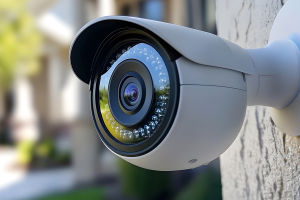Hey Lykkers!
We've all seen those smart robots in movies or news stories — machines that seem to think, act, and even talk like people.
But have you ever paused and thought: how do these intelligent robots actually work? Let's explore their inner world in daily, easy-to-understand English — and by the end, you'll be the robot expert in the room!
How Do Smart Robots Work?
Smart robots work thanks to technologies like Artificial Intelligence (AI) and Machine Learning (ML). These aren't just buzzwords — they're the brains behind a robot's ability to “think,” make decisions, and learn over time.
They Make Their Own Decisions
One amazing thing about smart robots is that they can operate by themselves — no human pushing buttons every step of the way. How? They use AI algorithms that analyze information from their sensors. This helps them recognize patterns, make predictions, and solve problems in real-time. So whether it's adjusting to a new product design on a factory line or avoiding an obstacle, they can react fast and keep going.
They Learn and Get Better Over Time
These robots aren't stuck in one routine. With machine learning, they can learn from past experiences. Let's say a robot keeps missing a fastener when assembling a product. After enough tries and data, it learns to adjust — just like we would! This ability to fine-tune itself helps the robot work smarter, not just harder, and adapt to new tasks as they come up.
They Can See, Hear, and Talk
Smart robots come with high-tech “eyes” and “ears” — we're talking about computer vision and natural language processing. This means they can understand images, recognize voices, and even chat with people naturally. Whether it's identifying different types of packages in a warehouse or answering questions from a technician, their communication game is strong!
They Combine Many Smart Skills
What makes smart robots really powerful is how they combine a bunch of skills: AI, machine learning, vision, speech, and robotics. This combo is called Intelligent Automation (IA). IA allows them to sense, think, learn, and act — kind of like a digital all-in-one worker. They're perfect for dealing with complicated tasks that change constantly.
What Makes Smart Robots So Useful?
Smart robots aren't just cool tech — they bring real value to businesses. Let's dive into their top benefits.
They Work Independently
Once you program a smart robot, it doesn't need constant help. It can figure things out on its own. Whether it's sorting, assembling, or responding to changes, they can handle it. This makes them ideal for tasks that are too repetitive or detailed for humans to focus on all day.
They're Super Flexible
Traditional machines can be rigid. But smart robots? They can be reprogrammed and reshaped to fit new tasks quickly. That flexibility helps companies stay ahead when the market changes or when new designs need to be produced fast.
They Work Well with People
Smart robots don't replace us — they team up with us. They're designed to work alongside humans, helping with the heavy lifting or repetitive parts of the job. This human-robot collaboration is all about getting the best of both worlds: robot efficiency and human creativity.
They Make Workplaces Safer
Since smart robots can handle dangerous, dirty, or physically heavy jobs, human workers stay safer. That's a win-win: less risk for us, and higher productivity for the company.
They Boost Productivity
Smart robots can spot weak spots in the workflow and improve them — automatically. They help companies get more done, faster, and with fewer mistakes.
How Do We Build a Smart Robot?
So what goes into building one of these futuristic machines? Let's break it down.
Robot Brains: Cognitive Skills
A robot needs to “understand” its surroundings. That's where cognitive learning comes in — teaching the robot how to move, adjust, and mimic actions based on what it senses.
Built-In Artificial Intelligence
Modern robots can work by themselves, connect with other machines, and make decisions. Thanks to AI, they're able to adapt quickly and keep up with design changes. But for them to work safely with humans, we also need safety features like emergency stops or safety zones.
Cloud Computing for Support
Smart robots often rely on cloud computing — like how we store photos online. The cloud gives them access to massive data and computing power, helping them make decisions faster and smarter.
Manufacturing Power
To really shine, smart robots need to team up with advanced manufacturing tools. That way, they can produce high-quality goods quickly, and change direction fast when needed.
Safety Always Comes First
When smart robots and humans share a space, safety is key. We need built-in systems to protect both people and machines, and make sure robots interact with us in a friendly, predictable way.
Where Do Smart Robots Work?
These robots are popping up everywhere — not just in factories. Let's look at where they're making the biggest difference.
Healthcare and Research
Smart robots are helping doctors perform delicate surgeries and automate lab tasks. Some can even search for new chemical formulas faster than humans. One robot chemist even discovered a new material for making hydrogen from water!
Factories and Industry
In manufacturing, they're used for assembly, quality checks, and predicting when machines might break. Some cutting-edge robots can even change shape to suit a task — like something out of a sci-fi movie!
Transport and Cars
Smart robots are helping improve transportation too — making driving safer, controlling car gear shifts, and even reducing emissions.
Oil and Gas
In oil fields or offshore rigs, smart robots handle dangerous tasks, monitor equipment, and help maximize output safely.
Lykkers, smart robots are no longer science fiction — they're a big part of our world now. They think, learn, work, and even chat, thanks to a perfect mix of AI, machine learning, and robotics. From hospitals to highways, they're changing how we live and work.
If you've ever wondered how they really work, now you know — and maybe, just maybe, you'll start spotting them in more places around you. Let's keep an eye out for the future, together!
Want to explore how robots might enter our homes next? Drop a comment or ask me anything — I'm always up for a geeky chat! 🤖✨


